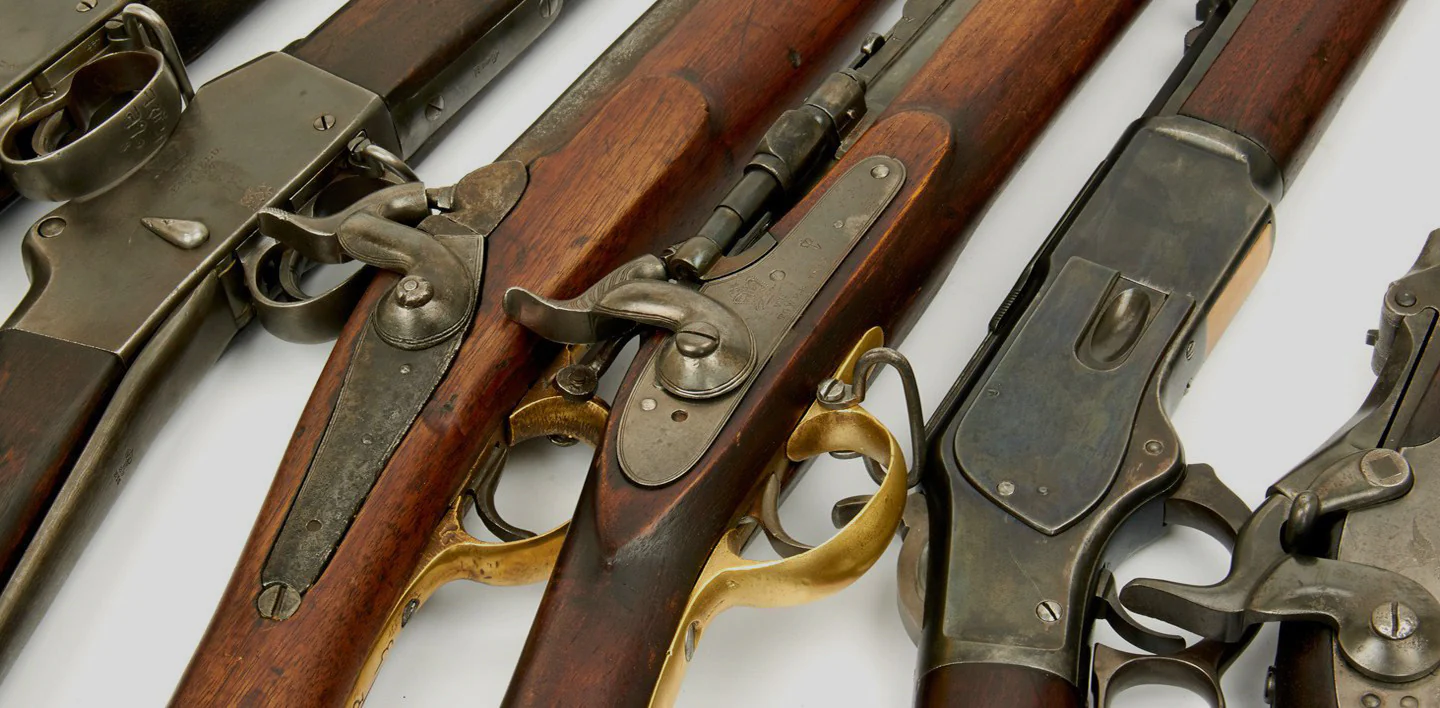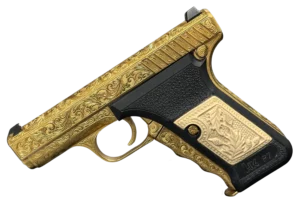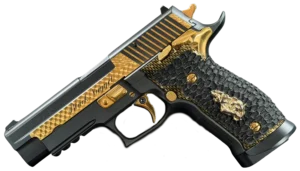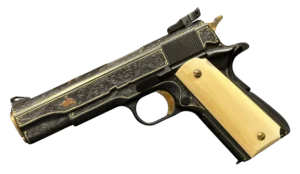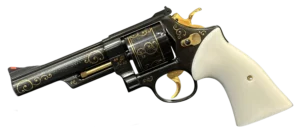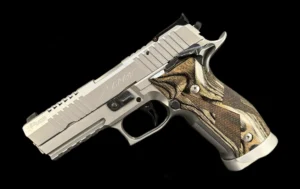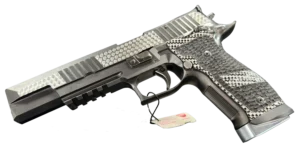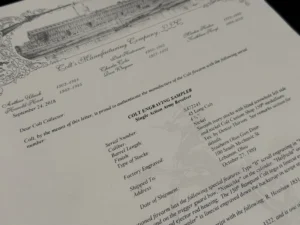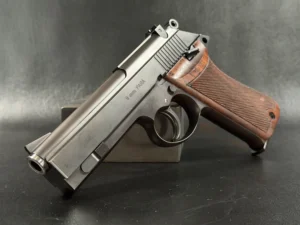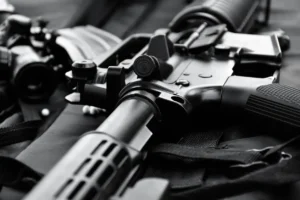Key Takeaways:
- Antique firearms aren’t just old — they’re stories you can hold: Every nick in the wood, every faded stamp, is a whisper from another time. Whether it’s a Civil War revolver or a forgotten European oddity, these pieces connect us to real people and real moments — and that’s worth more than a polished finish.
- Value comes from more than rarity — it’s about condition, history, and knowing when to leave well enough alone: You don’t need to chase unicorns. A well-loved, untouched piece with solid provenance can beat out a “restored to death” museum queen any day. Original scars? Sometimes they’re the most valuable feature.
- The laws are a patchwork, the market’s unpredictable, and preservation is half the battle — but that’s part of the charm: There’s no neat playbook for collecting antique guns. It’s messy, nuanced, and full of gray areas. But if you take the time to learn — learn — what you’re holding, you’ll appreciate it in ways that go way beyond dollar signs.
There’s something undeniably magnetic about antique firearms.
Maybe it’s the craftsmanship — the kind you don’t see much anymore — or perhaps it’s the way each one holds a sliver of the past, like a silent witness to some dusty corner of history. Either way, if you’ve ever held one in your hands, you know: these aren’t just weapons. They’re artifacts. And collecting them? That’s not just a hobby — it’s a conversation with time.
Let’s talk about that. About what makes these old guns tick (literally and figuratively), how to tell what’s worth keeping, what’s worth restoring, and what’s just a bad idea disguised as a bargain. This isn’t some glossy brochure — it’s the kind of guide you’d want from someone who’s been down the rabbit hole and lived to tell the tale.
So… What Exactly is an Antique Firearm?
That’s a good question, because the definition shifts slightly depending on where you are. Generally, we’re talking about firearms made before 1899. Why that year? In the U.S., at least, that’s the federal cutoff for what’s legally considered an “antique” — anything made before January 1, 1899, is usually exempt from gun laws.
But it’s not just about age. Accurate antique firearms are also mechanically and aesthetically different from modern guns. They might use percussion caps, flintlocks, or pinfire cartridges — stuff that makes today’s centerfire rounds look like space tech.
And if you’re wondering: yes, some of them still work. But, should you fire them? That’s a whole different story.
A Shot Through History
Antique firearms are woven into the fabric of history — a messy, bloody, fascinating one. These were the tools of revolution, expansion, and survival. Think: the Colt Dragoon in the saddlebag of a Civil War soldier. Or a pair of flintlock pistols gifted to Simon Bolivar, just casually changing the fate of South America.
There’s something sobering about holding a weapon that might’ve played a role in moments like that. Even guns that were never fired in anger — Danish sea rifles, old Winchester lever actions, early muzzleloaders — they tell us something about how people lived, fought, hunted, and died.
And some of them are just… weird. Beautifully weird.
How to Tell What You’re Holding (and If It’s the Real Deal)
Spotting a genuine antique takes a bit of homework. Age is a start. If it’s pre-1899 — or pre-1901 if you’re in Australia — you’re in the ballpark. But sometimes it’s less about a firm date and more about whether the ammo it uses is still made (and good luck finding pinfire cartridges at your local shop).
There are exceptions, of course. For instance, those Finnish Mosin–Nagants with hex receivers? Some fall just on the cusp but still count in certain circles. Confusing? Yep. That’s why a lot of serious collectors lean on guides like James Wesley Rawles’ “Pre-1899 Antique Guns FAQ.” It’s the collector’s Rosetta Stone.
The Value Game: What Makes One Worth More Than Another?
Okay, let’s get to the money bit — because for some people, this starts as passion and ends up as investment. Here’s what typically drives the value of an antique firearm:
- Rarity: Pretty straightforward. The fewer there are, the more someone’s gonna want it.
- Condition: And not just “does it shoot.” Original finish, intact parts, minimal wear — these things matter. Refinishing might make it look nice, but to purists, it kills value.
- Provenance: Did someone famous own it? Was it in a war? Does it come with a story? That story can add zeros.
- Market: Auctions can rapidly increase prices. Sometimes irrationally so.
And while we’re at it, let’s call out a few examples: pristine M1911s, early Colt Single Actions, Lugers with intact accessories, and Winchester lever guns tend to fetch strong money, especially if they come with paperwork, matching serials, or a whisper of historical significance.
Auctions, Dealers, and the Wild West of Gun Sales
Let’s say you want to buy (or sell) an antique firearm. You’ve got two basic routes: auction or private sale. Both have their advantages and disadvantages.
Auctions — especially the big names like Rock Island Auction, Morphy, or GunBroker — tend to draw serious buyers. They’re exciting, competitive, and, yeah, prices can get a little wild. But they also offer security and visibility. Be prepared for fees, commissions, and the occasional disappointment when you get outbid at the last second.
Private/commercial sales — These are more relaxed. Gun shows, forums, and trusted dealers. You might snag a deal no one else spotted. Or you might get burned by a clever fake. The market’s weird like that.
Rule of thumb? Always do your homework. Always.
Wait, Are Antique Guns Going Up in Value?
Short answer: yes.
Longer answer: they’re not making more 1860s Colts. As supply shrinks and demand remains steady or increases, prices follow. For instance, the average M1911 saw a bump of over $700 between 2015 and 2020. Some pieces with military provenance or interesting engraving can double or triple in value at auction.
But it’s not a sure thing. Trends can be fickle. What’s hot this year might be lukewarm next. That’s why most collectors say: buy what you love first. The money part is a bonus.
Laws, Loopholes, and Legal Landmines
Let’s get something straight — just because something’s old doesn’t mean it’s free from regulation. Every country (and in the U.S., every state) has its take on what counts as an antique and what you can do with it.
In the U.S., pre-1899 cartridge guns are mostly unregulated federally. But some states? They don’t care. If it goes bang, it might still be considered a firearm. Europe? It’s a patchwork of muzzleloading exemptions and replica rules. Australia? Before 1901, unless it had modern ammunition.
It gets trickier with replicas and modern muzzleloaders. Some countries treat them just like the originals; others slap full gun laws on them. So… read up. Seriously.
Preserving the Past (Without Ruining It)
Here’s the part that many new collectors often overlook: maintenance.
Yes, you want your antique gun to look good. But don’t overdo it. A light cleaning? Great. Rubbing it down with WD-40 and a Brillo pad? Welcome to ruined history.
A few preservation tips that matter:
- Keep them dry. Moisture is the enemy.
- Store them in stable environments (avoid basements or attics if possible).
- Dust them gently. No commercial clothes — some have oils or abrasives.
- Use soft brushes for the bore. Nylon or natural bristle, not metal.
The idea is to preserve, not “improve.” These guns earned their scars.
Restoration: Heroic or Horrific?
Should you restore an antique firearm?
Well… maybe.
Restoration walks a fine line. Done correctly, it can bring a battered piece back to life. But mess it up, and you could destroy its value, both historical and monetary. It’s like antique furniture: sometimes the patina is the point.
If you’re considering it:
- Document everything before starting.
- Disassemble carefully (or better yet, have a pro do it).
- Keep original parts whenever possible.
- Don’t over-polish or buff down markings.
- Use reversible restoration techniques when possible.
Talk to a gunsmith who specializes in antique firearms. Not just someone good with Glocks.
Modifying Antique Guns: Tread Carefully
Let’s say you want to update or “modernize” an antique piece. Maybe drill and tap for a scope mount? Refinish the wood? Add a new trigger?
Stop.
In most cases, this is a bad idea. Not only could you lose the firearm’s antique classification (and open yourself up to legal trouble), but you’ll likely crater its collector value. The charm of antique firearms is in their originality. Modify too much, and you’ve just made an ancient — and now less interesting — gun.
Buying and Selling: How to Do It Right
Selling or acquiring an antique gun is usually more relaxed than modern firearm transactions, but don’t get sloppy.
In the U.S., you usually don’t need an FFL to buy or sell pre-1899 guns. But state laws can still apply. Get a bill of sale. A certificate of authenticity helps. And if you’re shipping it? Pack like you’re sending Fabergé eggs.
Use:
- Thick cardboard boxes
- Old towels (not bubble wrap)
- Double layers
- Masking tape, not duct tape
- Insurance, tracking, and signature on delivery
UPS tends to be the go-to in the States, but check their latest policies just in case.
Final Thought (Because Not Everything Needs a Bow)
Antique firearms are weird, wonderful things.
They’re frustrating, thrilling, and sometimes heartbreakingly expensive. But once you catch the bug, it’s hard to let go. Whether you’re into the raw history, the mechanical artistry, or love the chase of finding a rare piece, there’s a kind of quiet joy in this world.
And hey, worst-case scenario? You end up with a truly remarkable conversation piece that also happens to be a time machine.
Frequently Asked Questions
In the U.S., it generally refers to any gun made before 1899. Other countries tweak the cutoff — Australia says pre-1901, Spain says pre-1870 — but the idea’s the same: old enough that it falls outside modern gun laws. That said, some guns fall into the category if their ammunition is no longer manufactured. Yep, it’s a gray area.
Usually, yes — at least in the U.S., Federal law doesn’t treat pre-1899 antiques as firearms. But here’s the catch: state laws can still apply. Some places are stricter, especially if it’s something that could still get you fired. Always double-check your local laws before bringing one home (or selling one off).
Start with the date — anything made before 1899 is the golden zone in the U.S. But check ammo type, markings, manufacturing method, serial numbers — all that jazz. There are guides, such as the Pre-1899 FAQ by James Wesley Rawles, that serious collectors swear by. Or talk to a specialist — guessing here is risky (and expensive).
Some are. Many aren’t. Even if one could fire, that doesn’t mean you should fire it. The metal might be fatigued, or the barrel could be damaged in ways you can’t see. If you’re tempted to try? Have it inspected by a gunsmith who is knowledgeable about antique firearms. Don’t just take it to your buddy who’s good with ARs.
Gently. No chemicals. No metal brushes. Use soft cloths, light oils, and dry environments. Treat them like you would a museum piece, not your deer rifle. The goal isn’t to make them look new — it’s to stop them from getting worse.


